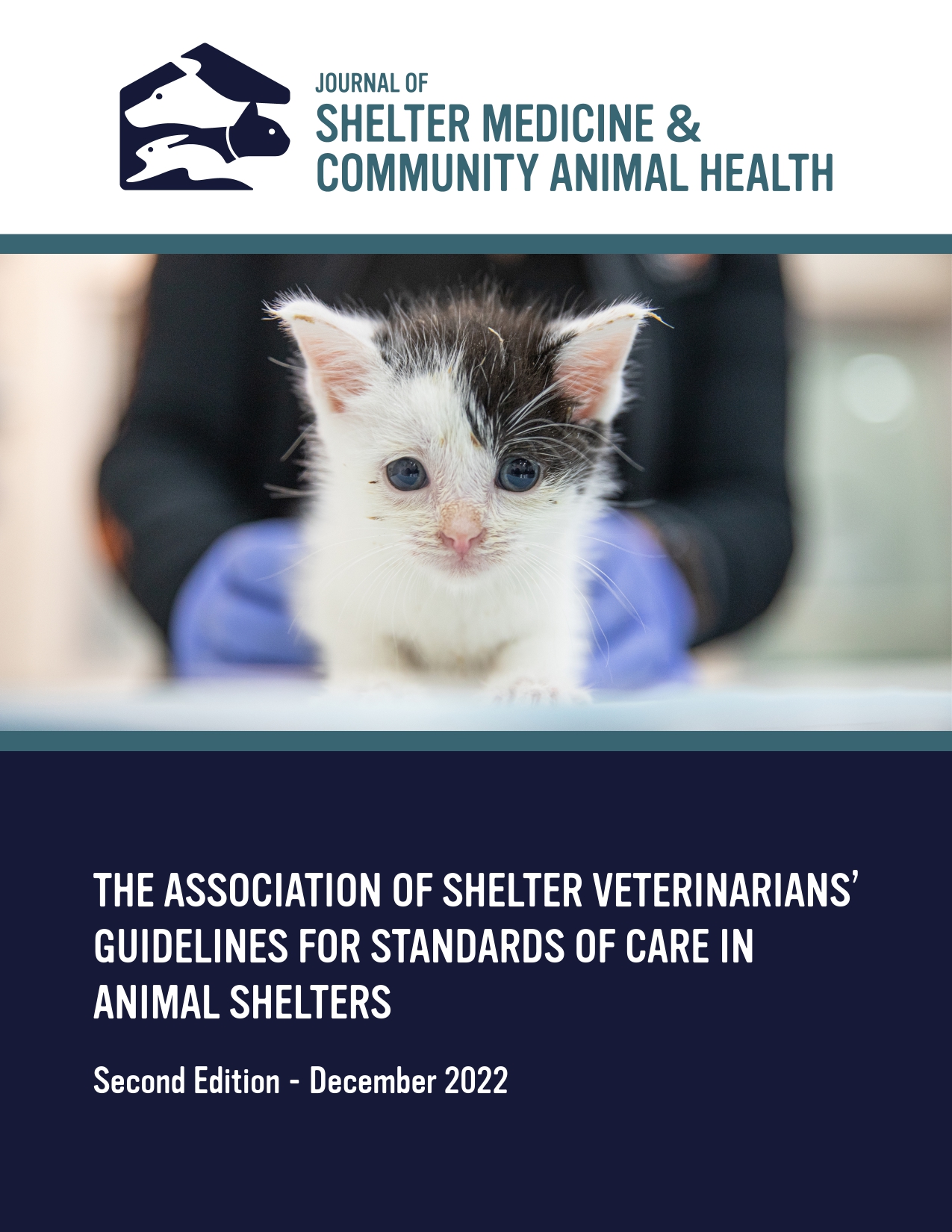Incidence, Seroprevalence, and In-shelter Transmission of SARS-CoV-2 in Cats [Abstract]
DOI:
https://doi.org/10.56771/jsmcah.v2.50Abstract
Cats are susceptible to infection with SARS-CoV-2 and can transmit the virus to humans. Experimentally infected cats shed virus for 5-10 days and generate antibodies within 7 days, while naive cats cohoused with these cats shed virus orally within 24 hours. Shelters intake cats from SARS-CoV-2 endemic communities and house them in close proximity, creating the opportunity for shelter-acquired disease. Shelter cat populations could serve as a reservoir for the virus, where it might mutate and spill back into human populations. This study aimed to determine the incidence and seroprevalence of SARS-CoV-2 in cats housed in a shelter.
Cats over 1 kg undergoing anesthesia between April and December 2020 in a large shelter were enrolled in the study using convenience sampling. Pharyngeal, conjunctival, and serum samples were collected. The pharyngeal/conjunctival swabs were analyzed by Real-Time PCR using N1 and N2 probes derived from the virus's nucleocapsid protein (N) portion. One sample positive for N1 within the 40 cycles specified by CDC protocol but only positive for N2 after 41 cycles (late rise) was sequenced. The seroprevalence of SARS-CoV-2 antibodies was assessed using the cPass SARS-CoV-2 Neutralization Antibody Detection Kit.
During the study period, 7,179 cats entered the shelter, and 350 were sampled. Most sampled cats were owner surrender (45%) or stray (43%), which was different (P<0.0001) from the overall population (26% owner surrender and 64% stray). Seven (2%) samples were PCR positive (95%CI 0.8-4.0%), 199 (57%) were negative, and 144 (41%) were inconclusive. Of the inconclusive samples, 85 (59%) were positive for N1 but negative for N2. The median length of stay before sampling (LOSBS) was 4 days (IQR 1-10) for all sampled cats and 13 days (IQR 5-22) for PCR-positive cats. Of the 131 serum samples tested to date, 11 (8%) were positive (95%CI 4.3-14.5). The median LOSBS for antibody-positive cats was 5 (IQR 1-5; range 1-8). One positive cat with a LOSBS of 5 days was PCR and antibody positive. The cat with a sequenced sample had a LOSBS of 13 days, was antibody negative, and had both base pair deletions and substitutions in the N2 target probe region.
Consistent with in-shelter transmission, the median LOSBS for cats positive by PCR was greater than the documented SARS-CoV-2 infectious period. All but one of the seropositive cats had a LOSBS of 5 days or less, suggesting the previous infection was community-acquired. The sequenced sample was credibly from a shelter-acquired infection, and the base pair deletions and substitutions were consistent with a feline-specific strain circulating in the shelter.











